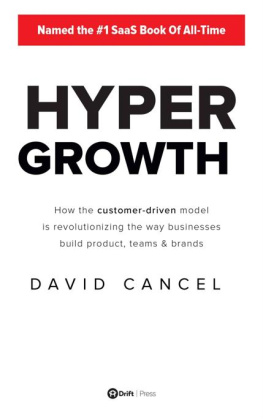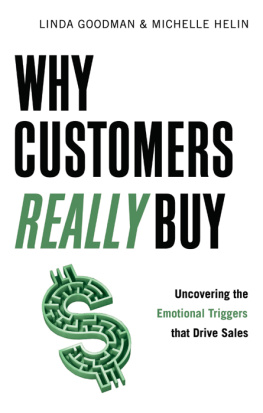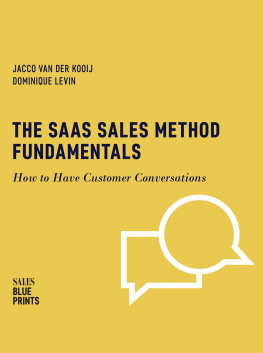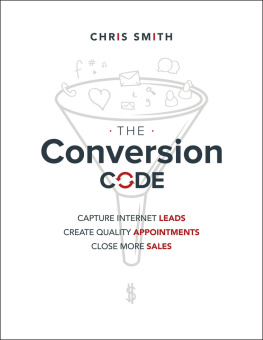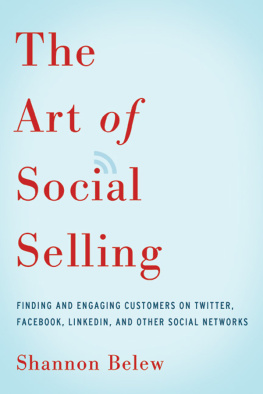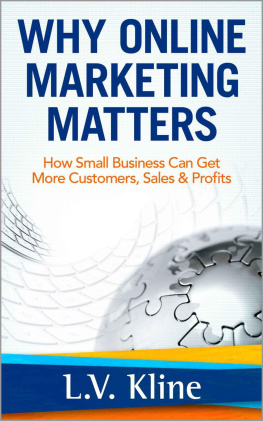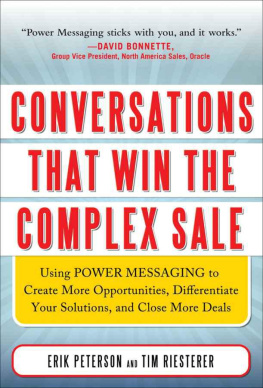David Cancel - Conversational Marketing: How to Grow Leads, Shorten Sales Cycles, and Improve Your Customers’ Experience with Real-Time Conversations
Here you can read online David Cancel - Conversational Marketing: How to Grow Leads, Shorten Sales Cycles, and Improve Your Customers’ Experience with Real-Time Conversations full text of the book (entire story) in english for free. Download pdf and epub, get meaning, cover and reviews about this ebook. year: 2019, publisher: Wiley, genre: Business. Description of the work, (preface) as well as reviews are available. Best literature library LitArk.com created for fans of good reading and offers a wide selection of genres:
Romance novel
Science fiction
Adventure
Detective
Science
History
Home and family
Prose
Art
Politics
Computer
Non-fiction
Religion
Business
Children
Humor
Choose a favorite category and find really read worthwhile books. Enjoy immersion in the world of imagination, feel the emotions of the characters or learn something new for yourself, make an fascinating discovery.
- Book:Conversational Marketing: How to Grow Leads, Shorten Sales Cycles, and Improve Your Customers’ Experience with Real-Time Conversations
- Author:
- Publisher:Wiley
- Genre:
- Year:2019
- Rating:5 / 5
- Favourites:Add to favourites
- Your mark:
Conversational Marketing: How to Grow Leads, Shorten Sales Cycles, and Improve Your Customers’ Experience with Real-Time Conversations: summary, description and annotation
We offer to read an annotation, description, summary or preface (depends on what the author of the book "Conversational Marketing: How to Grow Leads, Shorten Sales Cycles, and Improve Your Customers’ Experience with Real-Time Conversations" wrote himself). If you haven't found the necessary information about the book — write in the comments, we will try to find it.
Conversational Marketing and Salesis the definitive guide to generating better leads and closing more sales. Traditional sales and marketing methods have failed to keep pace with the way modern, internet-savvy consumers purchase goods and services. Modern messaging apps, which allow for real-time conversations and instant feedback, have transformed the way we interact in our personal and professional lives, yet most businesses still rely on 20th century technology to communicate with 21st century customers. Online forms, email inquiries, and follow-up sales calls dont provide the immediacy that modern consumers expect. Conversational marketing and sales are part of a new methodology thats centered around having real-time, one-on-one conversations with customers via chatbots and messaging, enabling powerful lead generation and optimal sales conversion. In this book, conversational marketing pioneer David Cancel shares his knowledge and experience to give marketers and sales professionals the innovative tools and proven techniques they need to carve out success in an increasingly dynamic business environment.
Effective customer communication is crucial to any business, particularly in sales and marketing. By allowing your business to communicate with customers in real time--when its most convenientfor them--conversational marketing improves the customer experience, generates more leads, and helps you convert more leads into customers.
Merge inbound and outbound tactics into a more productive dialog
Integrate conversational marketing techniques into your existing sales and marketing workflow
Generate higher-quality leads and shorten sales cycles
Improve the customer experience with real-time communication
Face-to-face meetings, phone calls, and email exchanges remain important to customer relations, but adding a layer of immediate, individual conversation drives the customer experience--and sales--sky-high. With a multi-layered approach that combines traditional methods and cutting-edge technologies,Conversational Marketing and Salescan help you maximize your businesss performance and potential for years to come.
David Cancel: author's other books
Who wrote Conversational Marketing: How to Grow Leads, Shorten Sales Cycles, and Improve Your Customers’ Experience with Real-Time Conversations? Find out the surname, the name of the author of the book and a list of all author's works by series.



